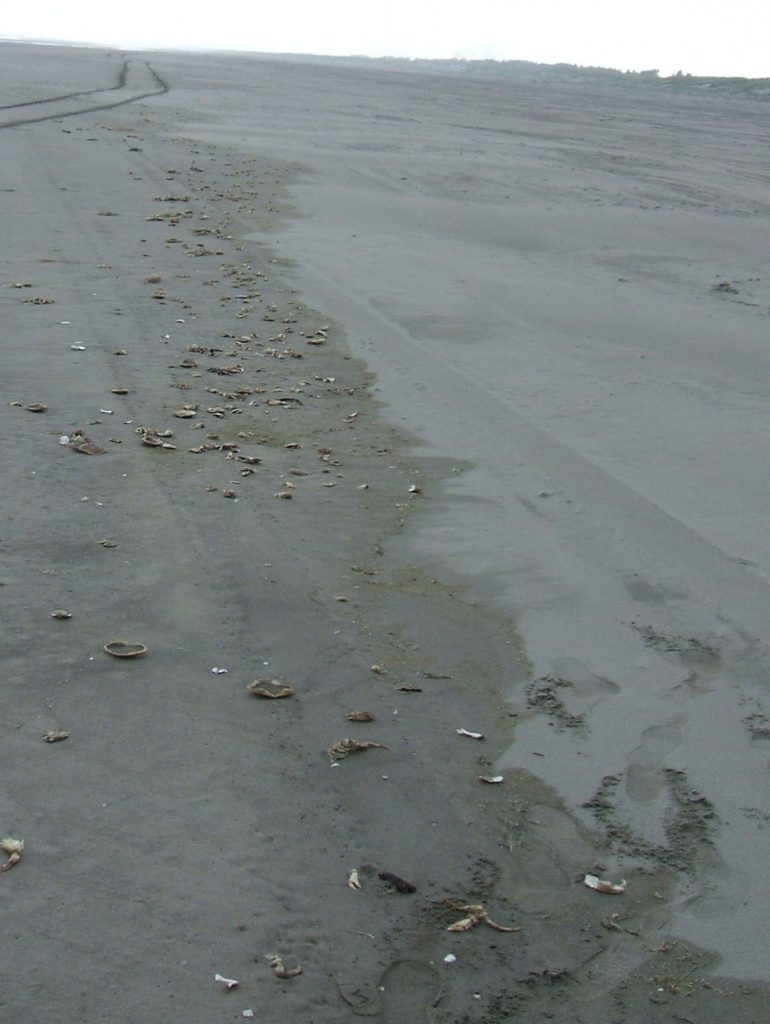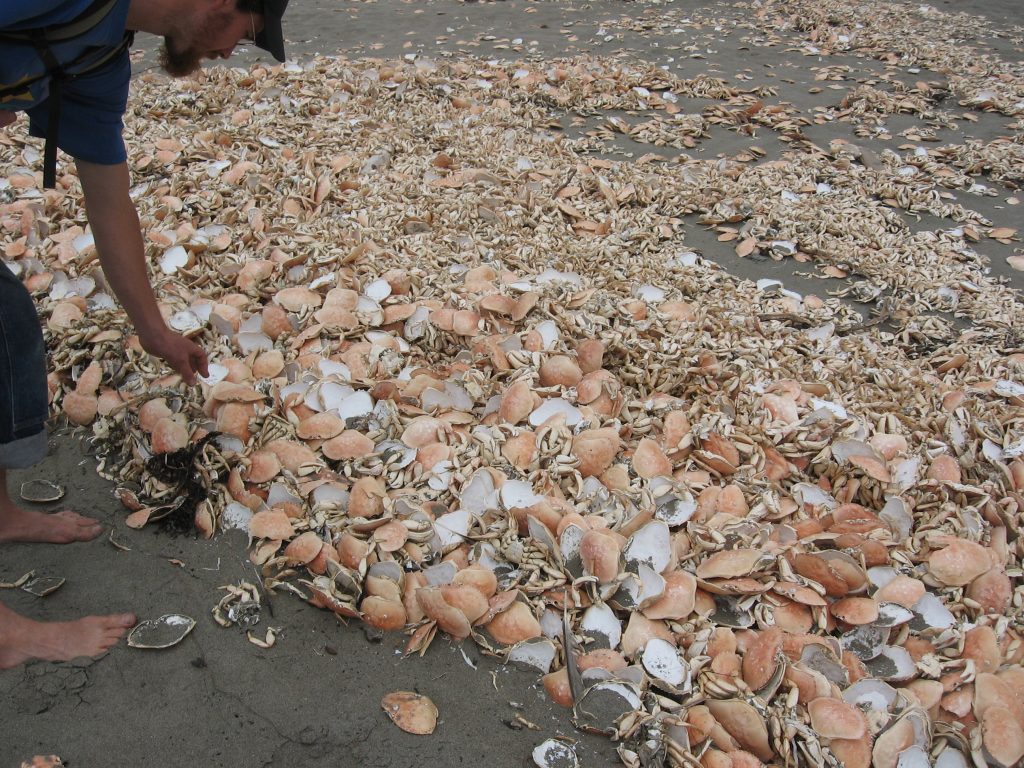Long Beach Peninsula COASSTer Paul Watersrat reminded us we’re heading into “dungie season,” a time when COASST participants on the outer coasts of Washington, Oregon, and California can expect to find some (or lots of!) Dungeness Crab molts.
Dungeness Crabs begin as tiny, shrimp-like zooplankton, that live throughout the water column. At the onset of downwelling in the fall, ocean currents push larval crabs inshore, where the bigger, tail-less versions become important prey for larger predators like salmon.
From there, the tiny crabs (looking much more crab-like now!) settle down in protected areas, hopefully out of site of snacking adult crabs. In the first two years of life, these tiny guys molt as many as six times per year. Adult females molt in the spring (now!), males in the late summer, usually all-at-one, which gives the impression of a big crab die-off. But make no mistake! These lightweight leftovers are either upper body shells only, or some combination of shells, legs gills, antennae, and mouthparts, but no guts.
The most striking instance we’ve seen occurred on Shi Shi (northern Washington Coast) in July 2011, with thousands to tens-of-thousands of molts were found on a single beach. Seen something like this on your beach? Lay down your ruler and snap a photo – we’d love to see.


